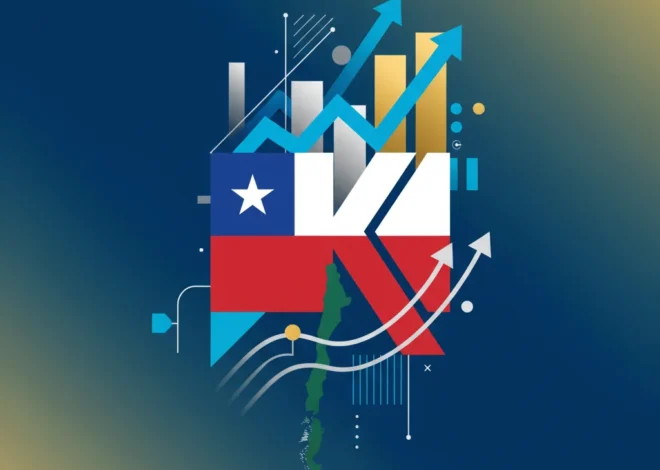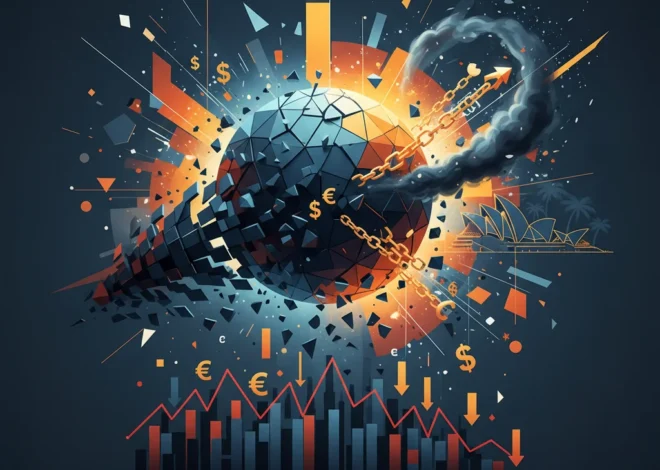
The Billion-Pound Fright: Unpacking the Surprising Economics of Halloween
Once a simple evening of trick-or-treating and carved pumpkins, Halloween has morphed into a commercial juggernaut, a cultural phenomenon with profound economic implications. What was once child’s play is now a serious business. In the United Kingdom alone, spending on this spooky season is now projected to exceed a staggering £1 billion, a figure that demands attention from investors, business leaders, and financial analysts alike. This isn’t just about candy corn and costumes anymore; it’s a powerful indicator of consumer behaviour, a driver of retail performance, and a fascinating case study in modern economics.
The evolution of Halloween from a niche festivity to a mainstream spending event reveals crucial insights into the broader economy. It highlights shifts in discretionary spending, the growing importance of the “experience economy,” and the resilience of certain consumer habits even in a turbulent financial climate. As we dissect this billion-pound market, we uncover a complex interplay of cultural trends, corporate strategy, and financial technology that is reshaping the retail landscape. For those in finance and investing, understanding the mechanics of this seasonal surge is not trivial—it’s a valuable lens through which to view the health of the consumer, the agility of the market, and the future of commerce.
From Sweets to Experiences: A Seismic Shift in Consumer Spending
The most telling aspect of Halloween’s economic transformation is not just the total amount spent, but how it is being spent. While confectionery and pumpkins remain staples, the real growth is happening in non-traditional categories. Modern consumers, particularly Millennials and Gen Z, are increasingly allocating their funds towards creating shareable, memorable experiences.
According to a report by the BBC, citing data from research firm Mintel, spending has diversified significantly. This includes a notable uptick in home decorations, adult costumes, pet outfits, and themed events. This diversification signals a maturation of the market. It’s no longer a single-day event for children; it’s a season-long celebration for all ages, creating multiple touchpoints for retailers and service providers.
Let’s examine the breakdown of this evolving Halloween spend, which paints a clear picture of changing priorities:
| Spending Category | Trend Analysis & Economic Implications |
|---|---|
| Home & Garden Decorations | Consumers are investing more in creating an immersive atmosphere at home. This “home-as-hub” trend, accelerated by the pandemic, benefits home goods retailers and DIY stores. It represents a shift from public to private celebration spaces. |
| Adult Costumes & Parties | This reflects the “experience economy” in action. Adults are driving a significant portion of the growth, seeking social media-worthy moments. This trend boosts apparel retailers, hospitality venues, and event organizers. |
| Pet Costumes & Treats | The “humanization of pets” is a powerful, recession-resistant economic force. Owners are willing to spend significant discretionary income on their pets, a trend that specialist pet retailers and even supermarkets like Tesco are capitalizing on (source). |
| Themed Events & Attractions | From theme park “Fright Nights” to local farm attractions, consumers are paying for curated experiences. This sector of the economy sees a direct Q4 boost, impacting tourism and leisure industries. |
This shift has profound implications for the broader economy. It demonstrates that even during periods of high inflation and economic uncertainty, consumers are willing to protect spending on social and experiential activities. This resilience in discretionary spending is a critical data point for economists analysing consumer confidence.
The £2.1 Billion Keyboard Stroke: How a Cyber Attack Became the UK's Costliest Financial Disaster
The Halloween Effect on the Stock Market: Identifying Seasonal Winners
For the astute investor, seasonal trends like Halloween offer tangible opportunities. The predictable surge in spending across specific sectors can have a measurable impact on quarterly earnings and, consequently, stock market performance. Understanding which companies are best positioned to capitalize on this billion-pound windfall is a key part of a sophisticated investing strategy. The practice of seasonal trading is not new, but the expansion of the Halloween market has created new avenues for potential growth.
The beneficiaries are no longer limited to confectionary giants. A modern “Halloween portfolio” would be far more diverse, reflecting the spending patterns discussed earlier. Investors should look towards a range of sectors that experience a direct uplift from this ghoulishly good business.
Here’s a look at the key sectors and representative players that stand to benefit:
| Industry Sector | Why It Wins at Halloween | Potential Stock Market Impact |
|---|---|---|
| Supermarkets & Grocers | These are the primary outlets for pumpkins, sweets, and increasingly, decorations and costumes. Supermarkets like Tesco and Sainsbury’s dedicate significant floor space to seasonal promotions, driving foot traffic and sales volume. | Potential for a strong Q4 sales report, positively impacting stock valuation. Their ability to manage supply chains for seasonal goods is a key performance indicator. |
| Discount Retailers | Retailers like B&M and Home Bargains thrive on seasonal events, offering affordable decorations, costumes, and party supplies. Their value proposition is highly attractive to budget-conscious consumers. | High sales volume can lead to better-than-expected earnings. Their stock performance is often closely tied to consumer sentiment and discretionary spending power. |
| E-commerce Platforms | Online marketplaces see a surge in searches and sales for costumes and unique decorations. They offer a wider variety than brick-and-mortar stores, capturing a significant share of the market. | Increased Gross Merchandise Volume (GMV) and user activity are key metrics for investors. Success during peak seasons demonstrates platform strength and logistical efficiency. |
| Entertainment & Leisure | Companies operating theme parks, cinemas, and special events see a direct revenue boost. This is a high-margin segment of the experience economy. | Strong ticket sales can significantly lift quarterly revenues, providing a positive catalyst for their stock price. This is a pure-play investment in the experience trend. |
The Role of Banking and Financial Technology in a Seasonal Surge
A billion-pound spending spree doesn’t happen in a vacuum. It relies on a robust and efficient financial infrastructure. The banking and financial technology sectors are the unseen engines powering this seasonal economy, and their role is becoming increasingly sophisticated.
For traditional banking institutions, a spending surge like Halloween means a massive increase in transaction volume. Card payments, both online and in-store, spike significantly. The ability of their networks to handle this peak load without outages is a testament to the resilience of the modern financial system. Behind the scenes, these transactions generate a wealth of data, which banks and their retail partners can analyse to understand consumer behaviour and forecast future trends with greater accuracy.
However, the real innovation is happening in the fintech space. Financial technology is fundamentally changing how consumers pay and how retailers operate during these crucial periods:
- Buy Now, Pay Later (BNPL): For larger ticket items like elaborate animatronic decorations or expensive costumes, BNPL services allow consumers to spread the cost. This fintech solution can increase the average transaction value for retailers and make higher-priced goods more accessible, further fuelling the market’s growth.
- Contactless & Mobile Payments: The speed and convenience of “tap-to-pay” and mobile wallets are essential for retailers managing high foot traffic. This technology reduces queue times and improves the overall customer experience, which is critical during a busy shopping season.
- E-commerce Payment Gateways: Secure and reliable online payment processing is the backbone of Halloween e-commerce. Fintech companies provide the technology that allows for seamless checkouts, fraud detection, and multi-currency transactions, enabling even small businesses to compete online.
- Inventory & Sales Analytics: Modern retailers use sophisticated software, often integrating financial technology, to manage inventory in real-time. This allows them to anticipate demand for specific products (like the year’s most popular costume) and avoid stockouts, maximizing revenue.
The integration of these technologies demonstrates how finance is no longer a back-office function but a core part of the customer-facing retail strategy. Efficient, flexible, and data-driven financial technology is what enables the Halloween economy to scale to a billion-pound valuation.
A Turning Tide? Unpacking the UK's Surprise Inflation Drop and What It Means for the Economy
Conclusion: More Than Just a Holiday, A Barometer for the Economy
The ascent of Halloween to a £1 billion industry is a powerful narrative about the modern consumer and the evolving economy. It’s a story that extends far beyond pumpkins and ghosts, touching upon core principles of economics, finance, investing, and technological innovation.
For business leaders and investors, the key takeaway is that seasonal events are no longer just blips on the financial calendar. They are significant economic phenomena that offer deep insights into consumer priorities, the health of the retail sector, and the direction of the market. The shift from product-based spending to experience-based consumption is a structural trend that will continue to shape commerce. Companies that understand and adapt to this—whether by enhancing their in-store experience, leveraging e-commerce, or integrating cutting-edge financial technology—are the ones poised for success.
Ultimately, the economics of Halloween serve as a valuable barometer. It measures our appetite for celebration, our willingness to spend on non-essentials, and our embrace of new technologies. As we watch the spending figures creep ever higher, we are not just observing a cultural trend; we are witnessing a dynamic and resilient segment of the economy in action, with important lessons for anyone involved in the world of finance, trading, and the stock market.
The £2.1 Billion Breach: How the Jaguar Land Rover Hack Rewrote the Rules of Financial Risk


